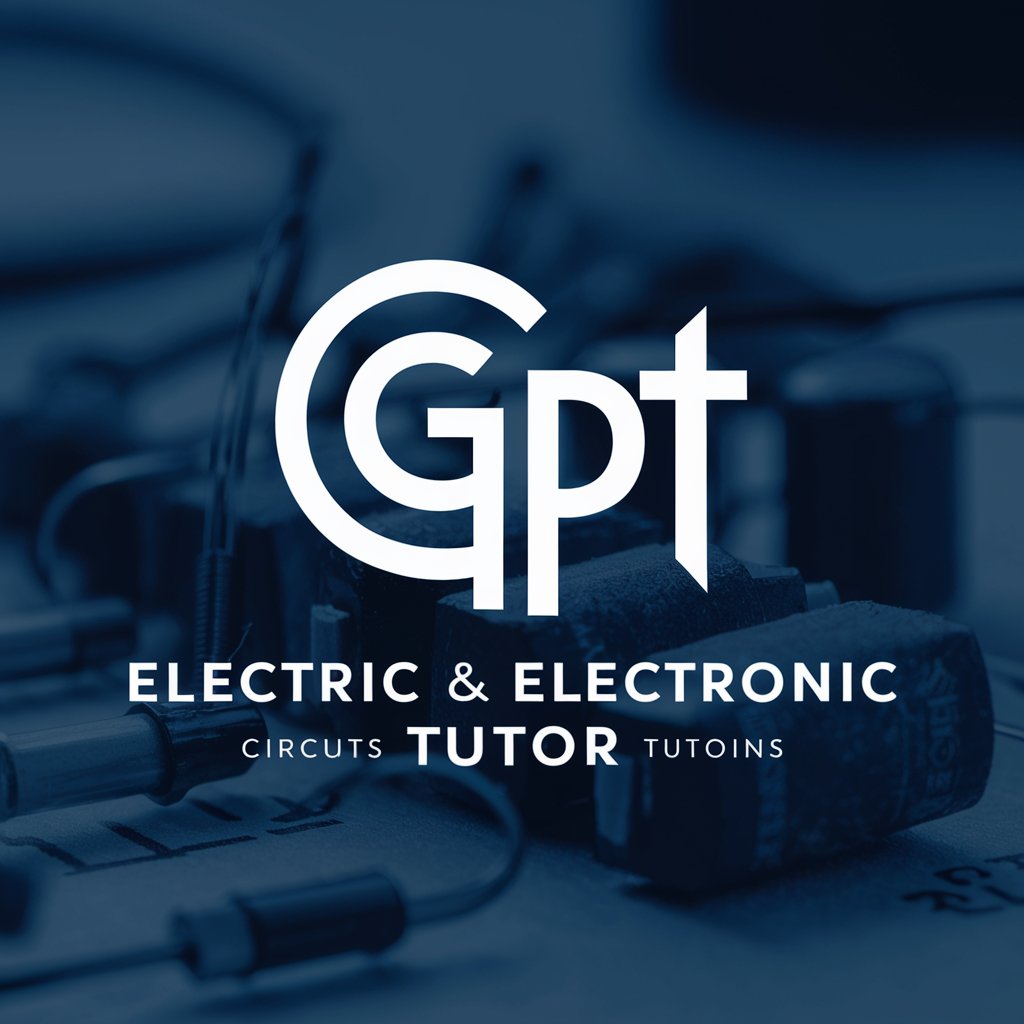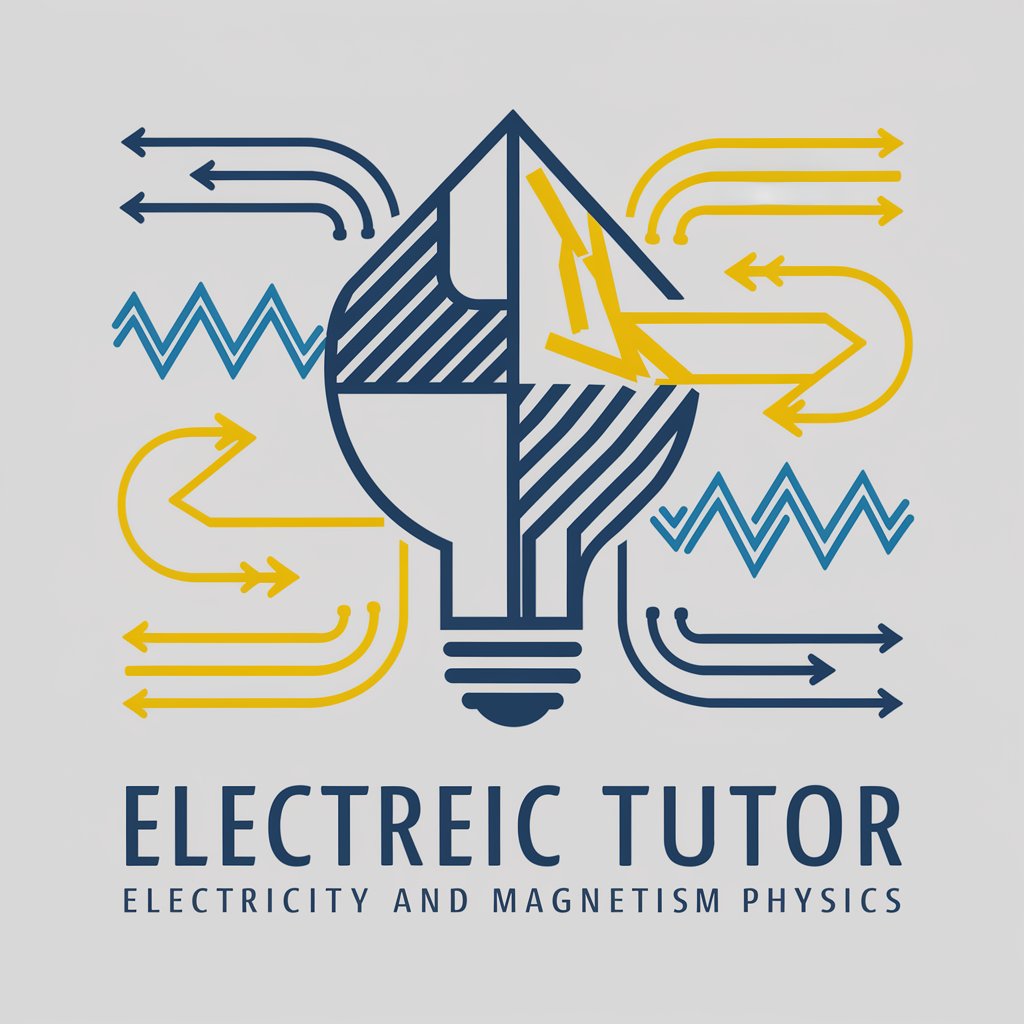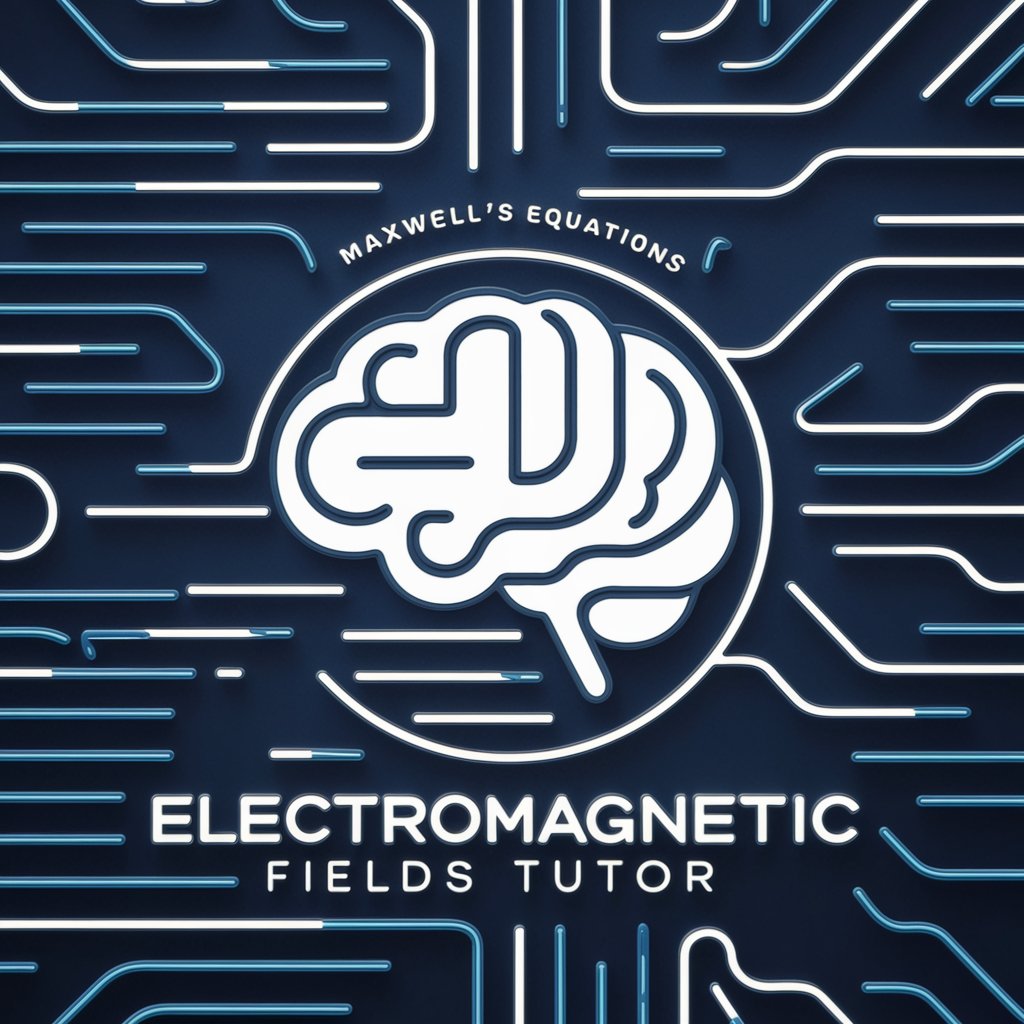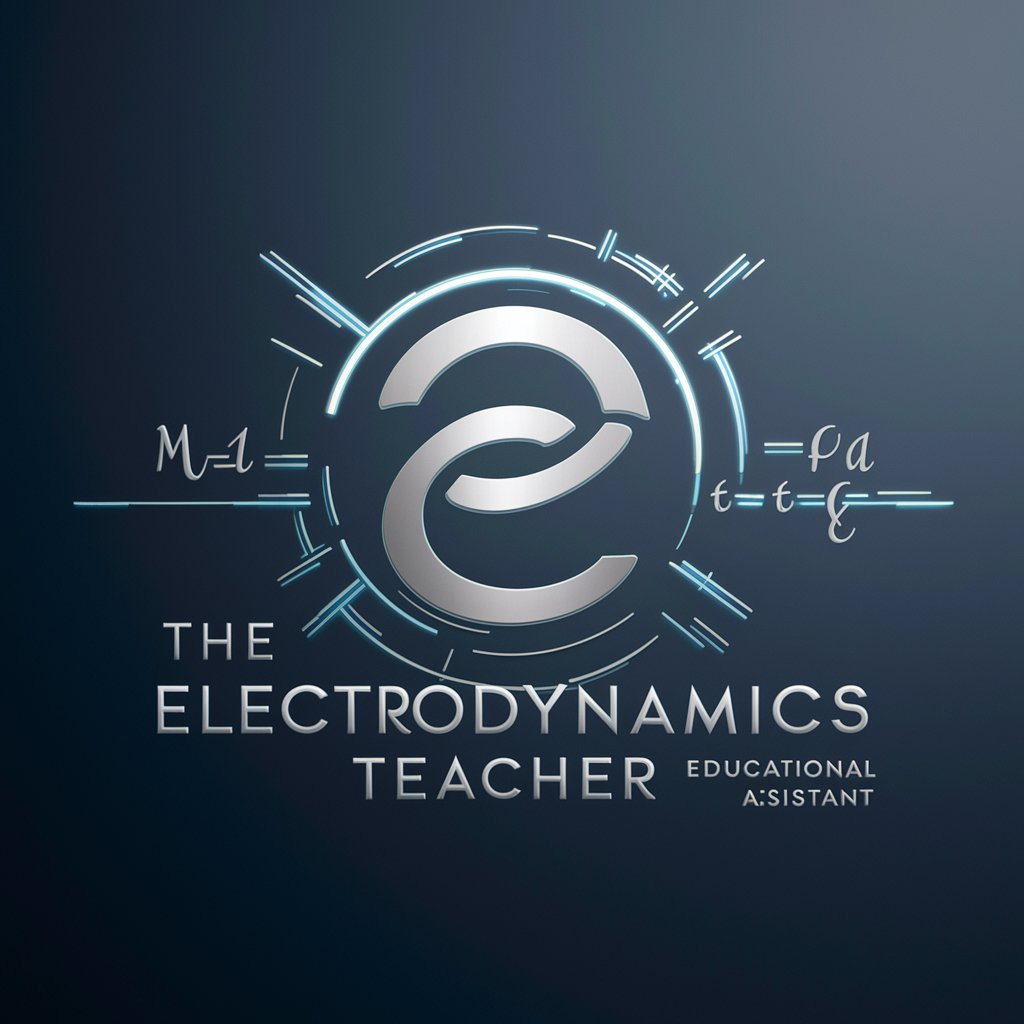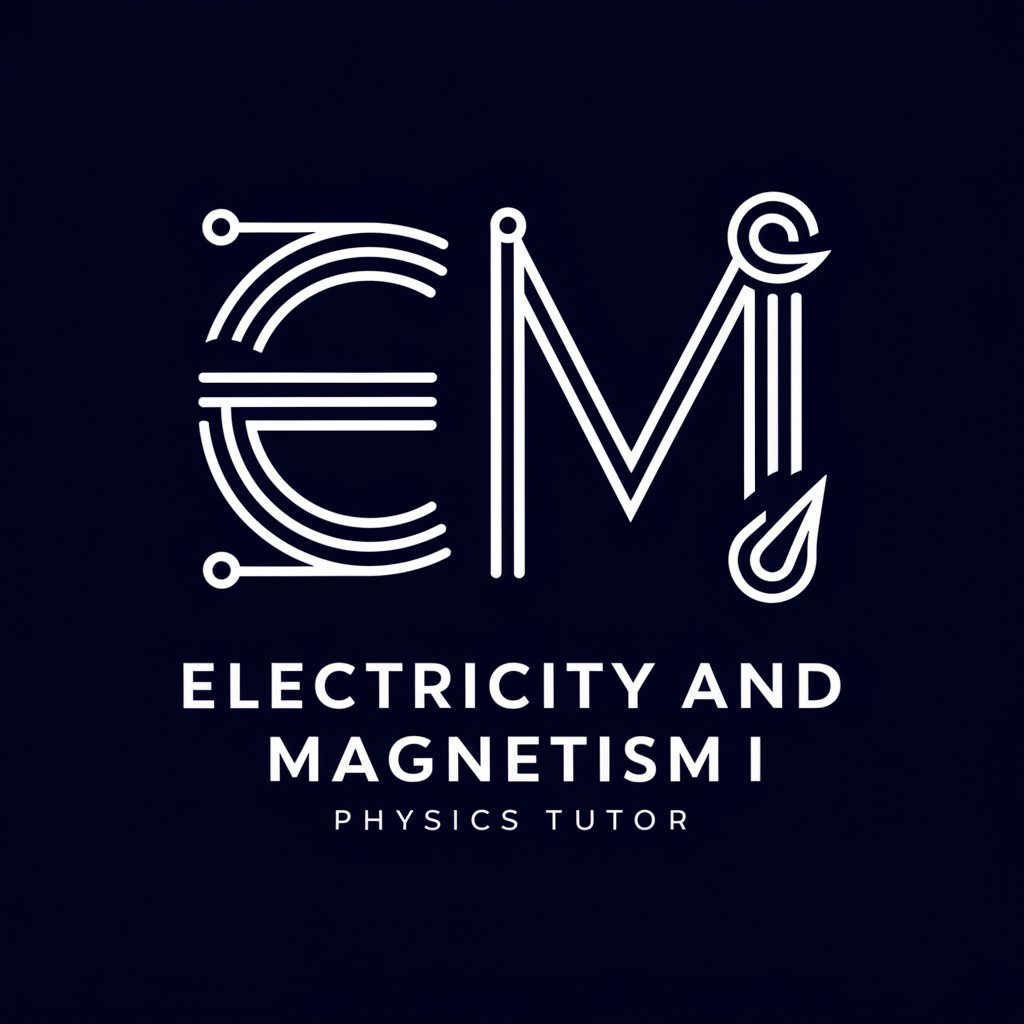
Electro-Magnetic Foundations in E.E. Lab. Tutor - Electro-Magnetic Tutoring
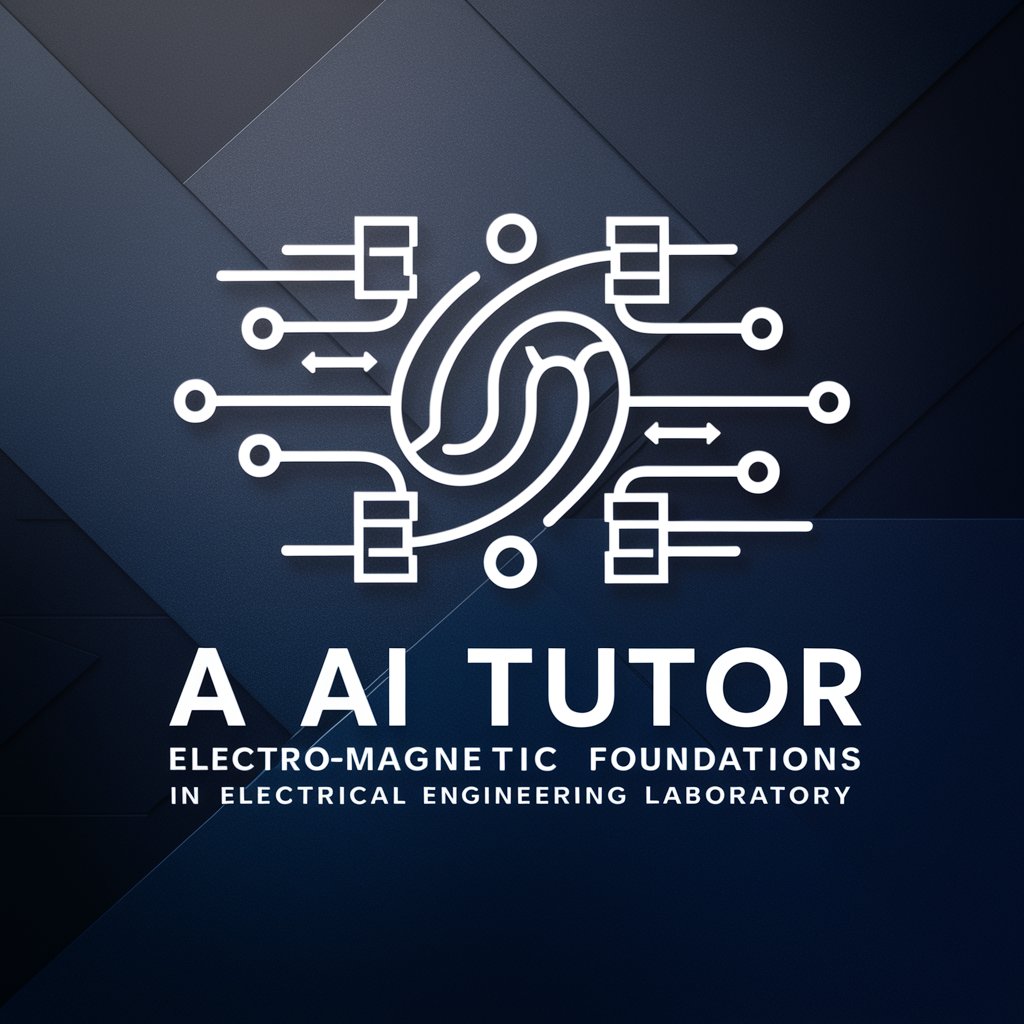
Hello! Ready to explore electromagnetic foundations?
Powering up E.E. learning with AI
Can you explain the behavior of resistive circuits in different configurations?
How do you measure the transient response in RL and RC circuits?
What are the key principles behind sinusoidal (phasor) RL, RC, and RLC circuits?
Can you walk me through an experiment demonstrating the operation of a transformer?
Get Embed Code
Introduction to Electro-Magnetic Foundations in E.E. Lab. Tutor
Electro-Magnetic Foundations in E.E. Lab. Tutor is a specialized AI designed to facilitate learning and understanding of electromagnetic principles and their applications within the realm of electrical engineering. It serves as a virtual tutor, providing detailed explanations, guiding through laboratory experiments, and clarifying complex concepts in electromagnetic theory. This AI tutor is equipped to assist students in mastering topics such as the behavior of resistive circuits, capacitors and inductors, transient RL and RC circuits, sinusoidal (phasor) RL, RC, and RLC circuits, along with practical insights into motors, generators, and transformers. An example of its utility includes guiding students through the process of setting up a laboratory experiment to observe the charging and discharging of a capacitor in an RC circuit, offering step-by-step instructions, explaining the theoretical background, and helping interpret the results. Powered by ChatGPT-4o。

Main Functions of Electro-Magnetic Foundations in E.E. Lab. Tutor
Detailed Explanations of Theoretical Concepts
Example
Explaining the concept of magnetic flux and its significance in the design of electric motors and generators.
Scenario
When a student struggles to understand how magnetic fields interact with electric circuits, the tutor provides an in-depth explanation of Faraday's Law of Electromagnetic Induction, supplemented with practical examples such as the operation of a simple electric generator.
Guidance Through Laboratory Experiments
Example
Assisting in the setup and analysis of an experiment to measure the impedance in a RLC circuit at different frequencies.
Scenario
A student is preparing for a lab session focused on observing resonance in RLC circuits. The tutor offers a step-by-step guide for setting up the circuit, selecting the right components, and using the oscilloscope to measure voltage and current, explaining how these measurements relate to the theoretical concepts of resonance.
Problem Solving and Application
Example
Helping students design a simple transformer for a given power and frequency requirement.
Scenario
In a project-based learning module, students are tasked with designing a transformer to step down voltage for a low-power application. The tutor guides them through the process of calculating turns ratio, selecting core material, and evaluating efficiency, ensuring a practical understanding of electromagnetic principles and transformer design.
Ideal Users of Electro-Magnetic Foundations in E.E. Lab. Tutor Services
Lower Division Electrical Engineering Students
Students at the beginning of their electrical engineering education journey, who are building foundational knowledge in electromagnetic theory and its applications. These users benefit from the tutor's detailed explanations and guidance, making complex concepts more accessible and enhancing their practical laboratory skills.
Educators and Instructors
Professors, lab instructors, and teaching assistants seeking supplementary educational tools to enhance their curriculum. The tutor can provide additional resources for explaining difficult topics, offering students alternative explanations and perspectives outside of regular classroom hours.

How to Use Electro-Magnetic Foundations in E.E. Lab. Tutor
Start Here
Access the Electro-Magnetic Foundations in E.E. Lab. Tutor by visiting yeschat.ai for an introductory trial, no ChatGPT Plus required or login necessary.
Identify Your Needs
Determine the specific concepts or laboratory experiments you need assistance with, such as resistive circuits or transient RL circuits.
Interact Directly
Ask specific questions related to electromagnetic foundations. Be as detailed as possible to receive comprehensive answers.
Apply Knowledge
Utilize the detailed explanations and guided steps provided to apply theoretical knowledge in practical laboratory settings.
Review and Repeat
Review the answers and explanations. Practice and repeat the experiments or calculations as necessary to solidify understanding.
Try other advanced and practical GPTs
Magnetic Mentor
Empowering Your Attractiveness with AI

Legis Tracker Pro
Empowering Legislative Insight with AI

Legis Expert PT
Navigate Portuguese Law with AI

AI Authentication - Legit Check By Ch
Authenticate luxury goods with AI precision.

Legis Advisor
Demystifying Spanish Law with AI

Legit Food
Unlock your meal's secrets with AI.

Esperto in Fisica Sanitaria
Navigating Italian health physics regulations with AI.

MagnetMaestro
Unveiling Magnetism's Mysteries with AI

Magnetics
Empower Your Marketing with AI-Driven Lead Magnets

Dan Kennedy Magnetic Marketing Consulting
Empowering your marketing with AI-driven strategies.

Madonna Madders
Explore Madonna's world, powered by AI

Step 03 - Mana Ramp Maker
Craft your mana, shape your destiny.

Detailed Q&A about Electro-Magnetic Foundations in E.E. Lab. Tutor
How can this tool help me understand resistive circuits better?
The tool offers detailed explanations on the theory behind resistive circuits, demonstrates how to calculate voltage, current, and resistance, and provides examples of real-life applications. Additionally, it can guide you through laboratory experiments to observe these principles in action.
What kind of support does the tutor offer for dealing with transient RL circuits?
It provides a step-by-step approach to understanding transient behaviors in RL circuits, including the mathematical basis for inductor charging and discharging processes, graphical analysis, and tips for setting up and interpreting lab experiments.
Can the tutor explain the concept of phasors in AC circuits?
Yes, it breaks down the complex concept of phasors into understandable segments, explaining their importance in AC circuit analysis, how to represent them graphically, and their application in solving circuit problems involving sinusoidal steady-state analysis.
How does the tutor assist with understanding transformers?
The tutor clarifies the principle of operation of transformers, their types, how to calculate voltage, current, and turns ratios, and their role in power systems. It also suggests laboratory experiments to demonstrate these principles practically.
Is there guidance for lab safety and best practices?
Absolutely, the tutor emphasizes the importance of lab safety, providing guidelines on safe laboratory practices, proper handling of equipment, and tips to avoid common mistakes, ensuring a safe and productive learning environment.
